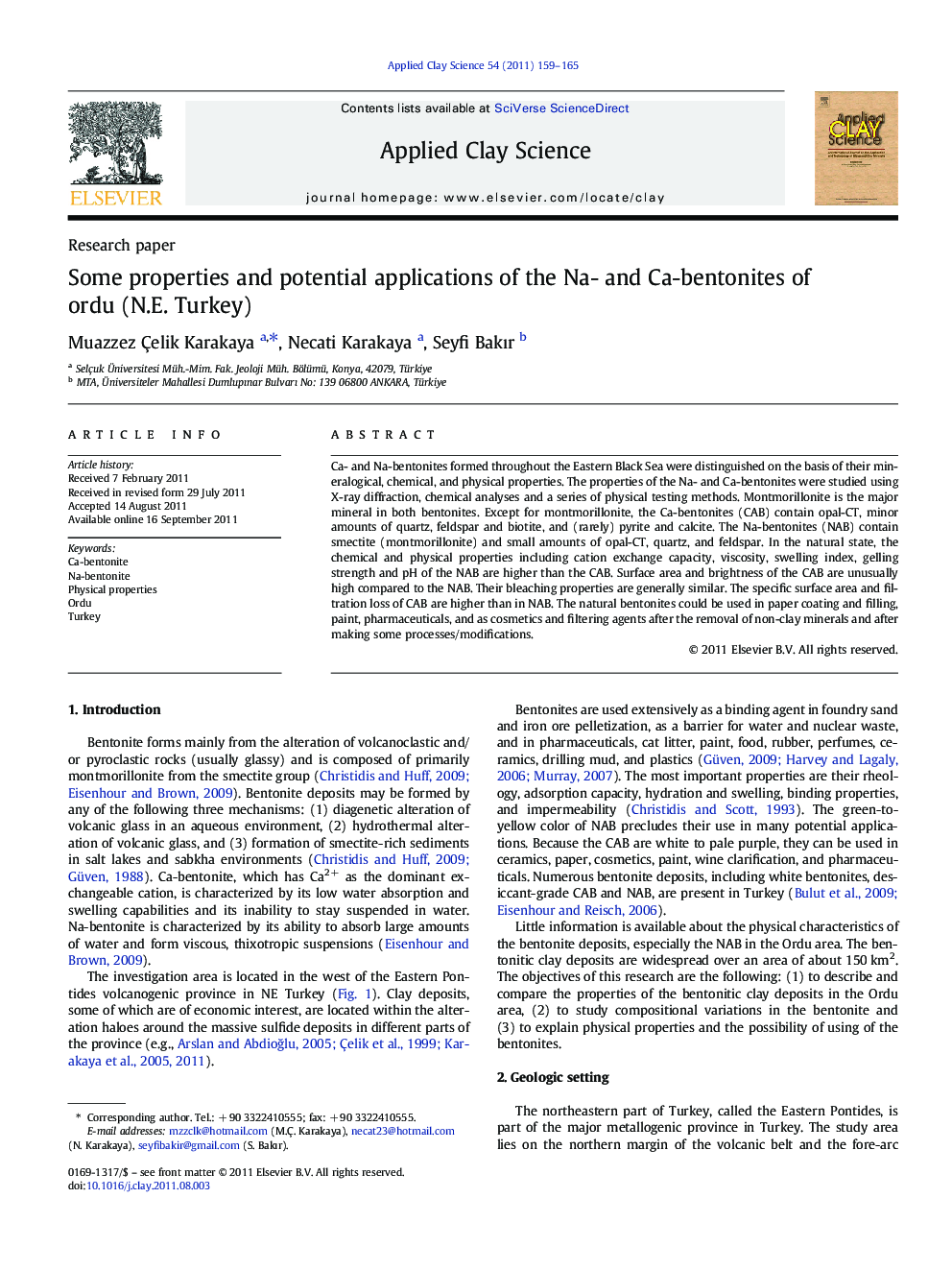| Article ID | Journal | Published Year | Pages | File Type |
|---|---|---|---|---|
| 1695365 | Applied Clay Science | 2011 | 7 Pages |
Ca- and Na-bentonites formed throughout the Eastern Black Sea were distinguished on the basis of their mineralogical, chemical, and physical properties. The properties of the Na- and Ca-bentonites were studied using X-ray diffraction, chemical analyses and a series of physical testing methods. Montmorillonite is the major mineral in both bentonites. Except for montmorillonite, the Ca-bentonites (CAB) contain opal-CT, minor amounts of quartz, feldspar and biotite, and (rarely) pyrite and calcite. The Na-bentonites (NAB) contain smectite (montmorillonite) and small amounts of opal-CT, quartz, and feldspar. In the natural state, the chemical and physical properties including cation exchange capacity, viscosity, swelling index, gelling strength and pH of the NAB are higher than the CAB. Surface area and brightness of the CAB are unusually high compared to the NAB. Their bleaching properties are generally similar. The specific surface area and filtration loss of CAB are higher than in NAB. The natural bentonites could be used in paper coating and filling, paint, pharmaceuticals, and as cosmetics and filtering agents after the removal of non-clay minerals and after making some processes/modifications.
► CAB are mainly hydrothermal in origin and the NAB formed in sedimentary environment. ► NAB are contain more smectite and less non-clay minerals than the CAB. ► Surface area, brightness, and filtration loss of the CAB are better than the NAB. ► The CEC capacities of the NAB are higher than of the CAB. ► No relation was found with specific surface area and CEC in both bentonites.
